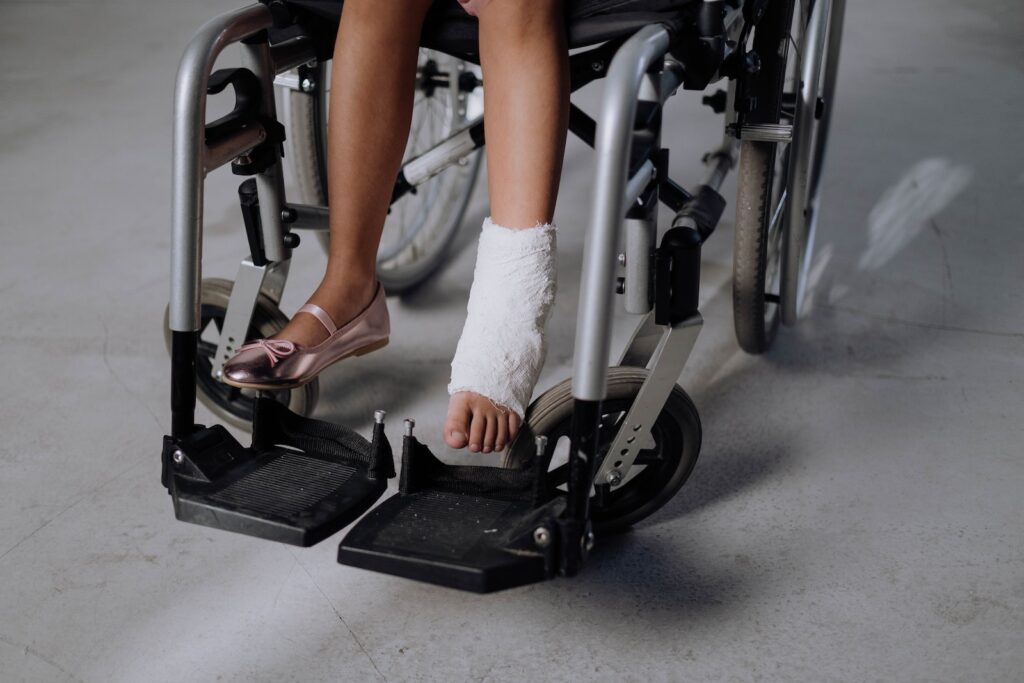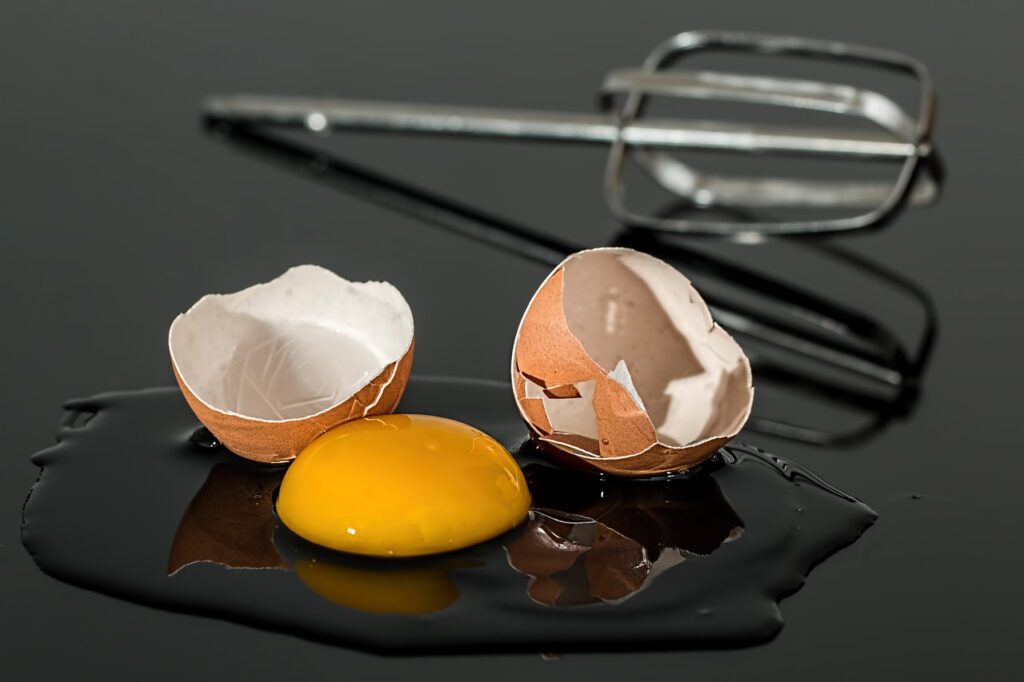Table of Contents
Introduction: What is 3D Printing and its Use in Orthopedics
3D printing, also known as additive manufacturing, is the process of creating a three-dimensional object by layering material repeatedly until the final product is complete. This technology has become increasingly popular in recent years due to advancements in software and hardware capabilities.
In orthopedics, this technology offers many benefits for both patients and medical professionals alike. The ability to manufacture custom implants with precision provides better outcomes for patients while reducing surgical time and enhancing recovery. In other words, it contributes positively towards improving patient’s quality of life after surgeries.
For example, traditional joint replacement surgery would require pre-made implants that may not fit perfectly into every patient’s unique anatomy. With 3D printing orthopedic surgeons can easily create customized implant designs based on an individual’s unique anatomy resulting in improved functionality with decreased chances of implant loosening or rejection by the body.
“The medical industry has greatly benefited from adopting this technology; reading through will give a clearer picture why it’s considered revolutionary.”
Benefits of 3D Printed Orthopedic Implants: Precision, Customization, and Reduced Surgery Time
One of the biggest advantages of using 3D printing technology in orthopedics is the precision it offers. Traditional implants are mass-produced and may have slight variations, but with 3D printing, each implant can be precisely matched to a patient’s unique anatomy.
This level of customization not only improves the fit and function of the implant but also reduces the risk of complications during surgery. Surgeons can use imaging scans to create a digital model of a patient’s joint or bone structure, which is then used to create an exact replica in three dimensions.
In addition to precision and customization, there is also reduced surgery time associated with this technology. Since each implant is created specifically for one patient, surgeons no longer need to spend valuable operating room time trying out different sizes or shapes until they find one that fits properly.
With traditional implants, there may also be substantial preparation needed before placing them into patients’ bodies. This includes cutting away healthy tissue surrounding the damaged area so that there will be enough space for new parts like screws or plates once inserted surgically – however since everything can now be customized using more advanced manufacturing methods such as additive manufacturing (i.e., “3D Printing”), doctors will save valuable time by bypassing all these steps altogether.
Conclusion: Allowing orthopedic Implants made through Additive Manufacturing (AM) technologies like “3D Printing” provides numerous benefits over traditional techniques including precision fabrication according to specific anatomical needs; improved healing times due less damage from unnecessary removals before surgical placement; lower waste material production leading greater efficiency overall while minimizing environmental impact too!
Materials Used in 3D Printed Orthopedic Implants: Metals, Polymers, and Ceramics
The field of orthopedics has been revolutionized with the use of 3D printing technology to create customized implant solutions for patients. One key advantage of this technology is the ability to use a wide range of materials that can be shaped into complex geometries with high precision.
Metal alloys, such as titanium and cobalt-chrome, are commonly used in the production of implants due to their strength, durability and biocompatibility. These materials also have excellent mechanical properties which make them ideal for load-bearing applications throughout the body. In particular, titanium offers advantages over traditional stainless-steel implants as it is lighter yet stronger than steel, resistant to corrosion and hypersensitivity reactions.
Liquid polymers, like polycarbonate urethane (PCU) or polyether ether ketone (PEEK), are examples of biomaterials used in flexible intramedullary nails for bone fractures or spinal fusion cages to replace degenerated intervertebral discs respectively. The flexibility provided by these types of polymer implants helps prevent cracks when exposed periodically under considerable stress while still providing adequate compression resistance required by doctors.
Ceramics, such as calcium phosphate compounds – beta tricalcium phosphate (βTCP), hydroxyapatite [Ca10(PO4)6(OH)2] known as HA – offer superior osseo integration compared to metal and polymer implants due to their biocompatibility properties whereby they facilitate direct bonding between living tissue cells thereby promoting growth patterns around implanted structures during healing processes post-surgery. This feature eventually results in stable biological fixation thus easing out health complications among patients who need to undergo bone fractures repair or joint replacement surgeries.
With the advances in technology, medical professionals can now use a wider range of materials than ever before and utilize their unique properties for various orthopedic solutions. The variety of metal alloys, polymers and ceramics used today are known for their strength, durability and biocompatibility which have made them essential components in designing personalized implants that match specific patient needs. This makes it easier and more effective for doctors to address individual challenges thus giving hope to millions around the world who need orthopaedic care.
Examples of Successful Cases Using 3D Printed Orthopedic Implants: Joint Replacement Surgeries and Improved Athletic Performance
3D printing has revolutionized the field of orthopedics, as it offers many benefits over traditional manufacturing methods. Customization and precision are two advantages that have been particularly significant in creating implants designed specifically for a patient’s unique needs.
Joint replacement surgeries, such as hip and knee replacements, have seen immense improvement with 3D printed implants. These implants are created from scans of the patient’s joint to ensure an exact match to their anatomy. As a result, patients experience fewer complications due to improper sizing or placement of the implant.
Athletes also stand to benefit greatly from 3D printed orthopedic implants. Injuries sustained during high-performance activities can require complex surgical procedures that may not be possible with conventional orthopedic devices. With customized 3D printed implants, athletes can return more quickly to their respective sports without sacrificing quality of life or performance levels.
An Example: Anthony Imbalzano
One example is Olympic-level gymnastics coach Anthony Imbalzano who suffered a severe leg injury while coaching his team back in 2017. The injury required surgery but unfortunately resulted in nerve damage and left him unable to walk properly until he received an experimental implant made through advanced ceramics’ technology by Oxford Performance Materials (OPM).
The OPM device was implanted into Mr.Imbalzano’s leg using a hole drilled directly into his tibia bone – which actually incorporated existing living tissue rather than just replacing it – providing strength and stability throughout recovery so he would be able to walk normally again after only four weeks instead of months later on crutches like most patients do!
This is just one example of how custom-made 3D printed orthopedic devices offer greater functionality and mobility outcomes compared with off-the-shelf solutions.
Challenges Limiting Wider Adoption of this Technology: Cost and FDA Approval Process
The use of 3D printing in orthopedic implants is an innovative technology that offers numerous advantages such as precision, customization, and reduced surgery time. However, there are still some challenges hindering the wider adoption of this technology.
The first challenge is the cost associated with using 3D printers for manufacturing these medical devices. Unlike traditional implants that are mass-produced in large quantities, each patient requires a custom-made implant to fit their unique anatomy. This process can be time-consuming and expensive.
The second challenge is the regulatory approval process set by the US Food and Drug Administration (FDA). The agency has stringent requirements for approving new medical devices regardless of whether they were manufactured using traditional methods or additive manufacturing technologies like 3D printing. Before a new implant can be approved for clinical use in patients, extensive safety testing must be performed to ensure it meets all regulatory standards.
Both factors limit wider acceptance of this technology among healthcare providers who may not have access to adequate funding or resources needed to acquire specialized equipment used in making customized orthopedic implants through additive manufacturing techniques like 3D printing thus limiting accessibility especially for smaller health facilities serving remote areas. However with increased demand over time it will become more affordable due to economies of scale which could make adoption easier later on down the line
Future Applications for 3D Printing in Orthopedics: Bioprinted Tissues and Organs
While the use of 3D printing for orthopedic implants has already revolutionized the way surgeries are performed, there is a new frontier being explored in this field. Bioprinting, which involves creating biological tissues and organs through additive manufacturing techniques, is set to completely transform the way physicians approach treating patients with complex medical needs.
Bioprinting allows for an unprecedented level of customization when it comes to designing implantable devices based on patient-specific anatomy. In addition to printing bone and cartilage replacements, researchers are now exploring ways to use bioprinting technology to create full joint replacements that include tendons and ligaments as well as other connective tissues.
Currently, scientists have successfully bioprinted small-scale versions of muscle tissue, blood vessels, and even human liver cells. While these breakthroughs represent significant progress towards developing fully functioning replacement organs from scratch using biomaterials such as collagen or alginate gel embedding living cells able to replace damaged ones; however there still remain many technical challenges around scaling up this technology for clinical applications
The potential benefits of bioprinted tissues and organs extend far beyond just orthopedics. Patients requiring organ transplants often face long waiting lists because donor organs are so scarce. Bioprinted organs could eventually help alleviate this problem by providing a reliable source of transplantable tissue made from a patient’s own cells thereby avoiding immunosuppression treatments necessary in current procedures thereby reducing rejection probability
Conclusion:
The future of orthopedic surgery will no doubt see further advancement in both materials used, technologies employed but also at another scale – bioengineering whole functional systems from subcellular components themselves – bringing together different fields such as computer-aided design (CAD), artificial intelligence (AI), cell biology & more under one umbrella to create truly personalized treatments that could revolutionize the medical field as we know it today.




